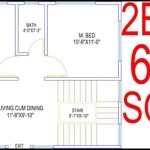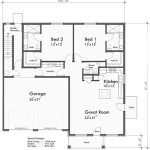Discover The Ultimate Guide To House Floor Plan Designs: Free PDF
Navigating the world of house floor plan designs can be overwhelming, especially for those embarking on their first homebuilding or renovation project. A well-designed floor plan is the foundation of a functional and aesthetically pleasing home, ensuring that every space serves its purpose effectively. This comprehensive guide provides a deep dive into the world of house floor plan designs, offering practical tips and resources to help you create a home that perfectly suits your needs and lifestyle.
Understanding the Basics of Floor Plan Design
Before diving into the intricacies of floor plan design, it's crucial to understand the fundamental elements that shape a home's layout.
- Scale and Dimensions: Carefully consider the size of your lot and the desired footprint of your home. A floor plan accurately reflects the square footage and dimensions of each room, ensuring that furniture placement and traffic flow are optimized.
- Room Layout and Functionality: Each room should have a specific purpose and be designed accordingly. Consider the intended use of each space – whether it's a cozy living room, a spacious kitchen, or a quiet home office – and arrange furniture and appliances strategically to maximize functionality.
- Traffic Flow and Circulation: A well-designed floor plan prioritizes ease of movement. Avoid bottlenecks and ensure that doorways and hallways are wide enough to accommodate furniture and prevent congestion.
- Natural Light and Ventilation: Strategic placement of windows and doors maximizes natural light penetration, creating an airy and inviting atmosphere. Consider the direction of sunlight and ensure proper ventilation throughout the house.
- Structural Considerations: Floor plans must take into account structural elements such as load-bearing walls, stairs, and other structural components. These elements impact the overall layout and should be carefully considered.
Leveraging Free Resources for Floor Plan Design
Many online resources offer valuable tools and templates to help you create a basic floor plan without professional assistance.
- Online Floor Plan Software: User-friendly software applications like Floorplanner, RoomSketcher, and Sweet Home 3D provide intuitive drag-and-drop interfaces, making it easy to create a rough draft of your floor plan. These platforms typically offer free versions with limited features, allowing you to experiment and explore different layouts before committing to a professional.
- Free Floor Plan Templates: Numerous websites, including Canva and Pinterest, offer free downloadable floor plan templates. These templates provide a starting point and can be customized to meet your specific requirements. You can adjust room sizes, add partitions, and modify the design to reflect your vision for your home.
- Open-Source CAD Software: For those with experience in computer-aided design (CAD), open-source software like FreeCAD and QCAD offer powerful tools for creating detailed floor plans. These programs are typically more advanced and require a steeper learning curve, but they provide greater control and flexibility for experienced users.
Tips for Creating an Effective Floor Plan
Creating an effective floor plan requires a blend of creativity, practicality, and meticulous attention to detail. Here are some key tips to guide your design process:
- Start with a Vision: Begin by defining your goals for your home. What are your priorities? What are your lifestyle needs and preferences? Do you need a large kitchen, a dedicated home office, or a spacious living area? A clear vision will guide your design decisions.
- Prioritize Functionality: A well-designed floor plan prioritizes functionality over aesthetics. Ensure that each room is properly sized and arranged to accommodate its intended use. Don't sacrifice functionality for mere visual appeal.
- Consider Traffic Flow: Think about how people will move through your house. Avoid creating narrow hallways or awkward turns that impede circulation and make the home feel cramped. Ensure that doorways are wide enough to accommodate furniture and allow for smooth movement.
- Maximize Natural Light: Strategic placement of windows brings in natural light, creating a brighter and more welcoming atmosphere. Consider the direction of sunlight and ensure that windows are placed to optimize natural illumination throughout the day.
- Don't Neglect Storage: Allocate adequate space for storage solutions. Built-in closets, pantries, and other storage features are invaluable in maintaining an organized and clutter-free home. Consider your storage needs and incorporate them into the design.
- Explore Different Layout Options: Don't be afraid to experiment with different floor plan layouts. Try rearranging rooms, adjusting dimensions, and exploring alternative configurations until you find a design that feels both functional and visually appealing.
Armed with these tips, you can embark on your floor plan design journey with confidence. By understanding the basics, leveraging free resources, and following best practices, you can create a home layout that perfectly reflects your needs and aspirations.

Free Simple Two Story House Plans Online Edit Available

Free Editable Open Floor Plans Edrawmax Online

How To Draw Accurate Floor Plans Step By Guide

Free Simple Two Story House Plans Online Edit Available

Free Editable Open Floor Plans Edrawmax Online

How To Draw Accurate Floor Plans Step By Guide

Free 8 Stunning First Floor House Plans With Bedroom S

Free Editable Open Floor Plans Edrawmax Online

12 Examples Of Floor Plans With Dimensions

Free Simple Two Story House Plans Online Edit Available
Related Posts








